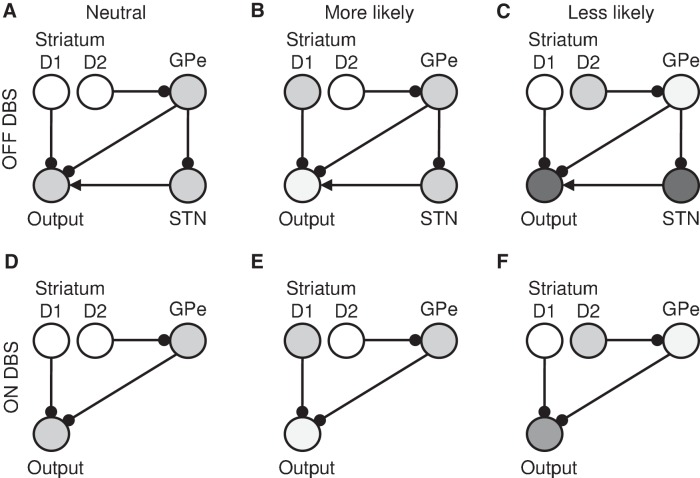Figure 5.
An alternative way of accounting for the experimental data assuming that the probabilities of actions being likely or unlikely are learned separately by striatal neurons in direct and indirect pathways, respectively. In each part, circles denote neural populations selective for one of the actions, located in different parts of the basal ganglia as indicated by the labels. The darkness of the circles indicates the activity level of the populations before stimulus onset. Arrows denote excitatory connections, while lines ended with circles denote inhibitory connections. The three columns correspond to blocks where the considered action has 50% probability of being required (A and D), is more likely (B and E), or is less likely (C and F). The two rows correspond to DBS being turned OFF and ON. Since the STN is disrupted with DBS turned ON, the input from STN is not shown in D–F. It is also assumed that the output nuclei adapt to changed input from the STN when DBS is ON, and thus the output nuclei in A and D have same level of activity.

